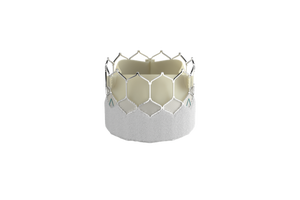3D-Printed Flexible Mesh Eyed for Knee, Ankle Braces
July 24, 2019
While 3D-printing has allowed for the fabrication of materials that can customize certain types of prosthetics and other devices for medical use, typically they are made out of rigid materials, which limits the mobility of a patient using them.
Now researchers at MIT have 3D-printed mesh materials that can offer more customization and flexibility for medical devices and braces that support parts of the body that need to flex, such as muscles and tendons.
|
MIT engineers have 3D-printed stretchy mesh, with customized patterns designed to be flexible yet strong, for use in ankle and knee braces. (Image source: Felice Frankel) |
Sebastian Pattinson conducted the research as a postdoc at MIT and is now a faculty member at Cambridge University. He was inspired by two disparate materials—fabrics and their conformable nature, and collagen, the structural protein that comprises human soft tissue—to design the new material.
Under a microscope collagen appears as intertwined strands, but these strands can easily be stretched out. However, once that happens, the strands are more difficult to extend, he said.
Inspired by this molecular structure, Pattinson designed wavy patterns that he then 3D-printed in a thermoplastic polyurethane material. He then designed and fabricated a mesh configuration in the style of a flexible yet durable fabric. The waves became key to the design—the taller he designed them, the more the mesh could be stretched at low strain before becoming stiffer, which he said can be tuned to act similar to human soft tissue.
“The structures can mimic the mechanical response of soft tissue and improve how devices conform to the body,” Pattison told Design News. “These may enable medical devices such as orthoses and surgical mesh to better support the body.”
Material in Action
To test and demonstrate how the material can be used in medical applications, the team printed a flexible mesh for use in an ankle brace. The specifically designed the mesh’s structure to prevent the ankle from turning inward—which is why so many people sustain ankle injuries—while allowing the joint to move in other directions freely.
Pattison and his team also 3D-printed a knee brace using the mesh that can conform with the movements of the knee as it bends, as well as a glove with 3D-printed mesh sewn into the top of it that can conform to the person’s knuckles. This latter item could be used to provide resistance against involuntary clenching that occurs in stroke victims, researchers said.
“The mechanics we show are achieved through the local variation of mesh geometry, connectivity, and material composition,” Pattison told us.
Researchers published a paper on their work in the journal Advanced Functional Materials.
RELATED ARTICLES:
Unique Printing Tactic
Pattison’s team employed some unique methods to give the mesh a quality similar to fabric, which helps it conform and flex with the body, even while it’s in motion, he said.
In traditional 3D printing, a material is printed through a heated nozzle, layer by layer, with each heated polymer layer bonding with the one beneath it. In his work, Pattison discovered that once he printed a first layer, he could allow for more time for the material to land on the layer below if he raised the print nozzle slightly. This gave the material time to cool, making it less sticky.
By printing the mesh pattern in this way, Pattison created layers that didn’t fully bond, so they could be freer to move relative to each other. This gives the mesh its flexibility and pliability, he said.
“3D printing is useful because it allows the mesh to be customized to individuals, enables 3D shapes that can better conform to the body, and allows the local patterning of different materials,” he told Design News.
Researchers plan to continue their work to explore further how they can use the mesh structures and materials to improve medical devices, Pattison said.
Elizabeth Montalbano is a freelance writer who has written about technology and culture for more than 20 years. She has lived and worked as a professional journalist in Phoenix, San Francisco and New York City. In her free time she enjoys surfing, traveling, music, yoga and cooking. She currently resides in a village on the southwest coast of Portugal.
Drive World with ESC Launches in Silicon Valley This summer (August 27-29), Drive World Conference & Expo launches in Silicon Valley with North America's largest embedded systems event, Embedded Systems Conference (ESC). The inaugural three-day showcase brings together the brightest minds across the automotive electronics and embedded systems industries who are looking to shape the technology of tomorrow. |
About the Author(s)
You May Also Like



.png?width=300&auto=webp&quality=80&disable=upscale)
